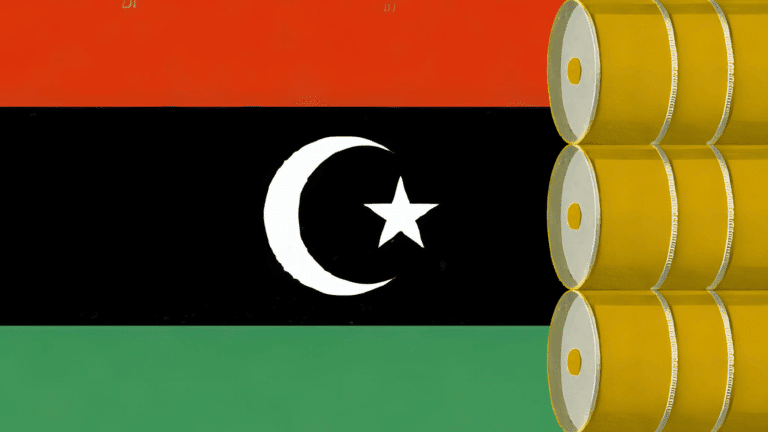This website uses cookies as well as similar tools and technologies to understand visitors’ experiences. By continuing to use this website, you consent to Columbia University’s usage of cookies and similar technologies, in accordance with the Columbia University Website Cookie Notice.
When Saudi Arabia, Russia, and other oil-producing countries met in Vienna last week, they debated who should slash oil output to offset the collapse in demand due to the coronavirus outbreak. When the meeting was over, the answer was clear: the United States.
Last week’s drama between Saudi Arabia and Russia, the world’s two largest oil producers after the United States, made for a historic meeting of the Organization of the Petroleum Exporting Countries (OPEC) that may cripple the organization’s credibility for years to come—and undermine the shale revolution in the process.
While past oil shocks have been driven by either supply or demand, the price collapse of 2020 is highly unusual in oil market history: It results from a massive demand shock and a huge supply overhang at the same time.
With the economic slowdown from the coronavirus outbreak projected to cause the first annual drop in oil demand since the global financial crisis in 2009, oil prices had already plunged 20 percent in the lead up to last week’s meeting of the so-called OPEC+ group, which includes both OPEC members and several other oil-producing countries, most notably Russia. As the extent of the demand drop became clear, Saudi Arabia pushed the other OPEC+ countries to agree to the steepest supply cuts in more than a decade.
Russia had made clear its ambivalence about cutting supply, given concerns about whether cuts would be effective in supporting prices, and Russia‘s reluctance to throw a lifeline to U.S. shale oil producers struggling under low prices and high debt. Last month, Russia had already balked at an emergency meeting to cut output. Still, it was widely expected that Russia, in the end, would agree to the proposed supply cuts to keep oil prices from crashing.
On the eve of the Friday meeting, however, Saudi Arabia surprised its partners by publicly pushing for steeper and longer production cuts than had been expected. Moscow felt Saudi Arabia was trying to jawbone it into agreeing to larger production cuts—by putting Russia in the position of either acquiescing or watching oil prices collapse. Russia called Saudi Arabia’s bluff. After hours of fruitless negotiations, ministers left Vienna without a deal. Oil prices cratered.
The following day, Saudi Arabia responded with a shock-and-awe campaign seemingly intended to remind Moscow just how much economic pain the kingdom can impose on other oil producers. Saudi Arabia slashed its crude oil prices and promised to ramp up oil output. When oil markets opened Sunday evening, prices plummeted to half what they had been in early January.
The collapse of Saudi-Russian cooperation—and the ensuing price war—will have significant ramifications.
First, Saudi Arabia’s decision to tank the oil market is a big gamble if it intends to bring Russia back to the negotiating table. The problem for the kingdom is that Russia is more resilient to lower prices than it is, having added considerably to its foreign exchange reserves while Saudi Arabia’s fiscal cushion has dwindled since the 2014 oil price collapse. Saudi Arabia still has ample financial reserves, but a prolonged period of low prices will strain the Saudi budget, undermine investor confidence, and lead to speculation about the devaluation of the Saudi riyal. If these factors force Saudi Arabia to reverse course before Russia capitulates, the kingdom‘s oil policy risks losing credibility.
Second, the collapse of the OPEC+ production agreement in Vienna risks long-lasting damage to the cartel. In recent years, OPEC has already been challenged by the surge of shale oil output and decline in OPEC’s share of global oil supply. At the same time, a combination of sanctions and political instability affecting many OPEC countries has meant that only a few OPEC members—essentially Saudi Arabia, the United Arab Emirates, and Kuwait—have been willing or able to cut production at all. Qatar, another major producer, quit the cartel a little over a year ago. For all these reasons, Saudi Arabia has viewed the participation of non-OPEC countries, especially Russia, as critical to the cartel’s success. Yet allowing a nonmember of OPEC to scuttle a deal to which all OPEC countries had agreed is a blow to the cartel’s credibility, and the possible withdrawal of Russia from the cooperation agreement risks undermining the organization’s ability to manage oil markets effectively.
Third, the biggest loser in the Saudi-Russian spat may well end up being the U.S. shale oil industry. Many shale producers have hedged their production, but if the current U.S. benchmark oil price of around $30 per barrel persists for an extended time, there will be widespread bankruptcies. Even companies with stronger balance sheets will be lucky just to maintain production levels and dividends. The U.S. rig count will fall dramatically. Because shale oil supply declines far more steeply than conventional production, U.S. production levels will thus begin falling sharply as well. Pioneer Natural Resources CEO Scott Sheffield estimates U.S. oil output will fall by more than 1 million barrels per day by next year if prices remain where they are today.
Of course, the demise of shale was predicted after the 2014 oil price collapse, as well. Now as then, production will begin to grow again once the oil price recovers, since the reserves are still there. But this time, the impact of the price collapse may last longer and cause permanent damage. Even before this weekend, shale oil production growth was already projected to slow sharply due to lower oil prices and much tighter capital constraints as investors grew skeptical of the sector due to its poor profitability. Bankruptcies would lead to consolidation and result in stronger shale companies, but would also weed out many companies that have been pursuing production growth at all costs despite being uneconomical. As a result, this oil price war may impair shale’s ability to grow as quickly in the future as it has in the past.
Fourth, this oil price war reveals that the shale revolution brings the United States not only significant economic and geopolitical strengths, but new vulnerabilities as well. Part of Russia’s motivation for spiking oil prices was not only its frustration with curbing output just to watch U.S. shale grow, but also reportedly Russian President Vladimir Putin’s growing anger with U.S. foreign policy, particularly the recent sanctions against the Nord Stream 2 pipeline project and a trading arm of Rosneft. That a key U.S, adversary believed it could inflict pain on the United States by pushing oil prices lower reveals just how much shale has upended traditional patterns of energy geopolitics. In the same way that China threatened to retaliate for U.S. tariffs by imposing its own tariffs on U.S. natural gas and oil exports, Moscow’s move reveals that U.S. “energy dominance” has its limits.
Fifth, an oil price collapse in the age of shale will mean far different winners and losers than in the past. Oil-producing regions of the U.S. will be hit much harder economically: not just corporate investment and family incomes, but the fiscal base of local communities, affecting education, infrastructure, and other public services. With the United States now importing about as much oil as it exports, the benefits of lower oil prices to consumers (at the gas pump, for example) roughly cancels out the harm to oil producers and workers. The oil price collapse will therefore do little to boost U.S. gross domestic product—a far cry from the economic lift the United States would have received from an oil price drop of this magnitude a decade ago.
Given the impact of gasoline prices on voters’ pocket books, Putin’s effort to hurt the United States by cratering prices may end up helping U.S. President Donald Trump in an election year. But the political benefits of lower oil prices for an incumbent president are hard to see when that price collapse is driven by an economic downturn. For Democratic candidates calling to restrict U.S. oil production and exports, their stance may prove less popular when U.S. supply is falling, the country‘s oil-producing states are hurting, and imports are starting to rise.
By launching a historic oil price war, Russia and Saudi Arabia are now engaged in a high-stakes game of chicken to see who blinks first. Until one of them does, the oil market will rebalance itself largely at the expense of U.S. oil producers. Meanwhile, consumers in the U.S. and other countries will enjoy lower prices. The impacts on OPEC as a cartel are yet to be determined, but its credibility and effectiveness hang in the balance.
Relevant
Publications
Is a Libyan Oil Revival Underway?
Libya's bid round for new oil and gas exploration and production highlights its potential revival as a major oil producer.

America’s Toothless Sanctions on Russian Oil
Last month, the Trump administration imposed fresh sanctions on Russia’s two largest oil companies, Rosneft and Lukoil, signaling a renewed desire to drive Moscow to the negotiating table in its war against Ukraine. But although these measures have the potential to harm the Russian economy, just how much damage they inflict will depend largely on one actor: Beijing. China bought almost half the oil Russia exported in 2024, evading Washington’s existing restrictions in the process. And new sanctions alone will do little to push China into significantly reducing its purchases.

The Slow Death of Russian Oil
Why Ukraine’s campaign against Moscow’s energy sector is working.



